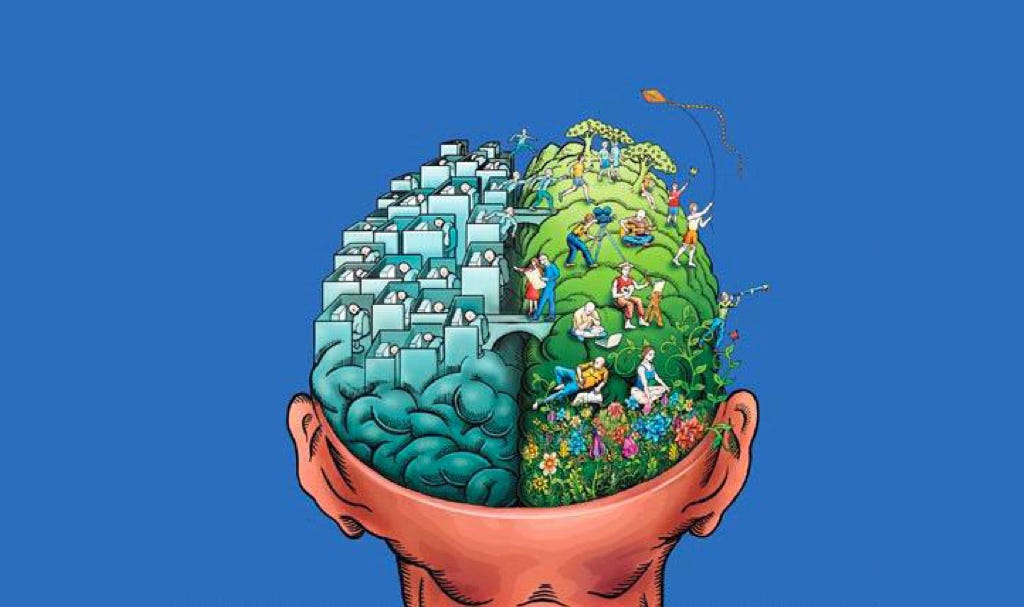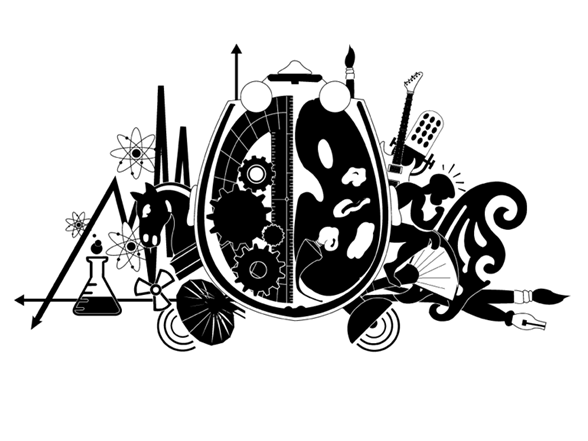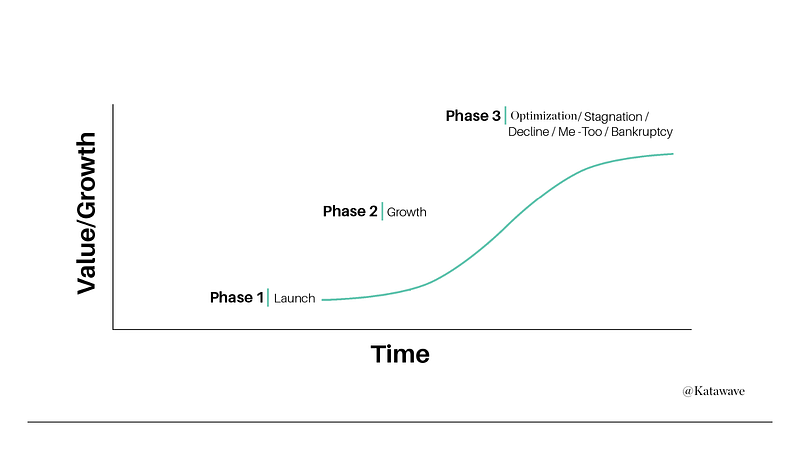
“The human mind treats a new idea the way the body treats a strange protein, it rejects it.” — P.D. Medawar (Biologist)
Neuroplasticity or neural plasticity, also known as brain plasticity describes the ongoing change to the brain throughout our lives. Plasticity suggests that the brain is flexible and not limited to a fixed growth period during childhood, youth or brain damage.
Neuroplasticity occurs when children’s brains organises themselves, when something new is learned, experienced and memorised or when there is a brain injury causing reorganisation and compensation of lost or damaged functions.
For a long time, we believed that as we aged the connections in the brain became fixed. Research has shown that in fact the brain never stops changing through learning, experiencing new things and connecting various ideas. Plasticity is the capacity of the brain to change with learning, mainly at the level of the connections between neurons. New connections can form and the internal structure of the existing synapses can change.
Our brains are constantly seeking ways to conserve energy. We are still not too far evolved from the days where our main concern was to stay alive when we had to run from man-eating predators. The brain still holds on to this heritage, so to ensure survival and conserve energy to survive, most things habitual are stored in the basal ganglia.
Routine short cuts include punching in your phone password or setting the alarm at night or simply locking your door. You know when someone asks you “Did you put the alarm on?” and you sometimes can’t remember, but when you check you inevitably did so? This is a primed embedded habit. This is your brain at work saving you precious energy.
Almost 50% of what we do every day is driven by habit. Like the example above many things we do, we do on autopilot.
In a study called “The neuroscience of leadership” Dr. David Rock and Dr. Jeffrey Schwartz tell us that habits are stored in the brain in the Basal Ganglia. Even when we enjoy new experiences, create new connections and digest new information eventually we will ignore these after a while.
This is the basal ganglia at work. When we habitualise anything in life it becomes difficult to change. Most interestingly, the more entrenched our habits or neural circuits become, the more our minds resist new ideas. This happens as we age and we end up stuck in routine. It has been proven that new experiences in relationships for example, such as new restaurants, experiences etc. leads to releases of dopamine and endorphins and thus keeps the relationship fresh and exciting.
Incredibly, our brains can treat new ideas or experiences as threats and trigger our amygdala, the fear centre of our brains (the amygdala is the reason we are afraid of things outside our control).
The Corporate Basal Ganglia
Think of when you started your current job or learned a new skill within that job. New neural connections are sparked to life in your brain and while it is challenging it is quite literally stimulating.
Fast forward 12 months when we have “settled in”. We have adapted to the corporate culture, we behave as “we should do”, we have found: our favourite local coffee shops, places to have lunch, ideal route to work, morning routine. Now, the basal ganglia reigns supreme, it is running the show.
Now picture this happening throughout the company in every department, at every level, in every employee brain. The corporate basal ganglia is running the corporate show!
Like we covered above, the more mature the corporate body, the more entrenched the neural pathways and the more the business will reject new ideas.
Psychological Inertia
Psychological inertia describes our inclination to rely on familiar assumptions and exhibit a reluctance and inability to revise those assumptions. This remains the case even when the evidence supporting them no longer exists.
Organisations experience this when managers fail to update and revise their understanding of a situation even when that situation changes. This is one of the biggest barriers to organisational change and breakthrough innovation.
Even companies, who are not steeped in political wrangling nor groupthink still fail. If they fail in spite of their desire to succeed and their avoidance of status quo, then you have to question if they are a victim of psychological inertia?
So, if your people in the company are good at their jobs, which we assume they are and their strategy is failing, then we need to call out what is broken.
The first thing to question is the information that feeds strategy. The second is that these senior executives are victims of psychological inertia.
Is the Brain Half Full or Half Empty?

Just as brains can kick everything to the basal ganglia to habitualise, so can the brain be “plastic” in a positive way.
We can stretch our minds by changing our routines, by consuming diverse content, by stretching our thinking. Personally we can try new music, food, routes to work.
We can question the ways we do things and try new ones. This is all stimuli for the brain.
Rejecting New Ideas
“The human mind treats a new idea the way the body treats a strange protein, it rejects it.” — P.D. Medawar (Biologist)
All companies reach a period of stagnation unless they are extremely active in avoiding it. We discussed previously on The Thursday Thought how all companies go through S curve growth and eventually experience stagnation.

Jeff Bezos describes this stage as Day 2:
“Day 2 is stasis. Followed by irrelevance. Followed by excruciating, painful decline. Followed by death.” — Jeff Bezos
The difficulty is as follows:
Organisations, businesses and companies are excellent at optimising existing products, services, processes. By becoming great at this, they create fixed corporate plasticity. Like we mentioned with the brain, the corporation then rejects new thinking, rejects risk taking and treats new ideas (and new thinkers) as threats rather than an opportunities.
A client I spoke to recently described new idea generation in his global company like a skin graft. He said there are several growth mindset individuals scattered throughout the company, who embrace risk. He said the company needs to strategically place these people throughout the company so that the skin graft “takes” and influences the rest of the corporate body.
As we discussed, the corporate amygdala usually takes over and rejects the skin graft. Often the new skin that is needed is treated as a threat and is eventually jettisoned from the corporation for doing exactly what it was brought in to do or oftentimes jettisons itself by pressing the eject button!
Solutions
Leaders need to become big thinkers, diverse thinkers. Stretching viewpoints is only a starting point.
Bringing in diverse thinkers, incubators and innovation leads will fail unless the heart of the corporate body is bought in, unless the amygdala is bought in and every executive function is bought in. Until that happens there will be failed hires (skin grafts), failed experiments, failed incubators and eventually failed companies.
Companies need to see their real problems and rise above the vested interest, look beyond the quarterly earnings (while still managing them) and understand real patterns, not trends, not surveys. Leaders need to understand the interactions between people and things, big data, digital, ai nor optimisation is the answer. The first step is to get clarity, a clear picture of what is happening.
Leaders need to question and threaten their own psychological inertia.
Leaders need to rise above the noise and adopt a high level satellite view of their opportunity or situation.
To attract new divergent thinkers, with diverse backgrounds and mindsets leaders need to develop a meaningful North Star. Without this the company will eventually reach day 2 (painful decline, followed by death).
Our personal brains, our corporate brains need to be challenged, to create new connections in order to be stimulated. Stimulated employees are more productive employees than those run by the basal ganglia. An employee who has a meaningful North Star does not need to be managed, they know where they are going.
I leave you this week with the words of Einstein:
“Life is like riding a bicycle. To keep your balance, you must keep moving.” — Albert Einstein
On this week’s Innovation show, we talk to Author, lecturer and Futurist in Residence at the Tech Foresight Practice at Imperial College, Richard Watson.
We talk about the threat to deep thinking in this digital age, even though that’s the last bastion for human jobs. We talk about the sex life of ideas and how ideas are formed.
We talk about the benefits of free play and how children can escape flippant thinking and a reliance on screens.
We talk about screenagers as multi-taskers and how that means less “deep” in their work and how they are constantly connected causing unnecessary mental stress. Despite an increase in IQ, basic reading and writing skills have deteriorated hugely. How they are mentally agile but culturally ignorant.
In the workplace we talk about “Busyness” and indeed the lack of “tune-out” and sleep due to distractions and overwork.
We also touch on corporate resistance to change and how it may be possible to plant new ideas in old companies and how corporations can attract new thinkers.
Finally, we look at solutions for the future.